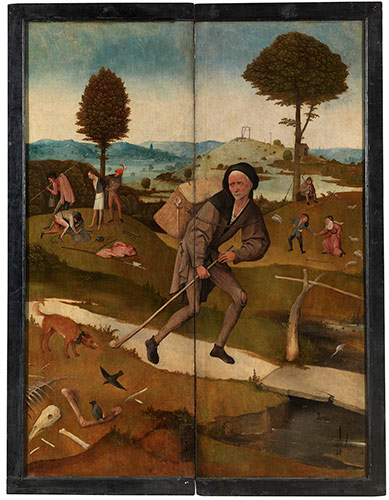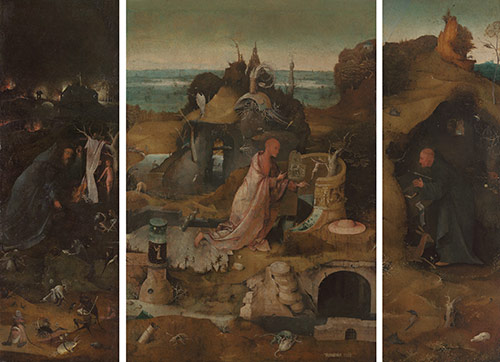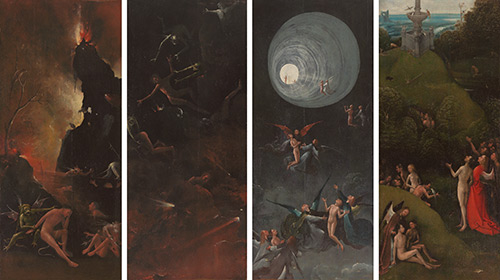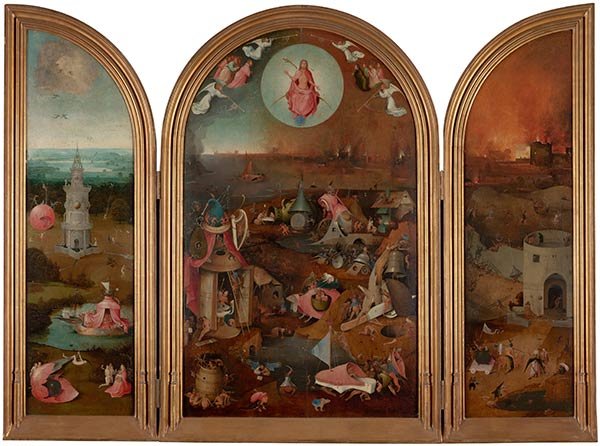Quirky, odd, unusual, and sinful are words that have all been used to describe the captivating paintings by Dutch artist Hieronymus Bosch (1450-1516). His works are often crowded with fantastical beasts and imaginary spaces, and part of the artist’s allure lies in the relative mystery surrounding his artistic aesthetic and small oeuvre. Only 25 paintings by Bosch survive today, making the chance to view even one an exciting proposition. How about 20?
Eight years in the making, a monumental exhibition of 20 of the 25 surviving Hieronymus Bosch paintings will open on February 13 at the Noordbrabants Museum in the Netherlands. The exhibition, “Bosch: Visions of Genius,” will be met with great excitement and anticipation because never before have so many works by Bosch been brought together. Twelve of the panels on view have undergone extensive restoration following the study of the Bosch Research and Conservation Project, including a new panel recently attributed to the Dutch master. Equally exciting is the inclusion of around 19 drawings by Bosch. All told, the exhibition will feature some 70 works that illustrate the breadth of Bosch’s scope and career.

Hieronymus Bosch, “Adoration of the Magi,” ca. 1470-1480, Metropolitan Museum of Art,
(c) Rik Klein Gotnik for the Bosch Research and Conservation Project 2015
Museum director Charles de Mooij suggested, “Hieronymus Bosch is the most important and most original medieval artist our country has ever produced. It is a long-cherished ambition to get the vast majority of his works back to his hometown in 2016. And a great opportunity for a new generation to get acquainted with his work, which is unique in every respect.” Via the museum’s press release, the basis of the exhibition “got underway back in 2007. The foundations for the exceptional works being loaned out for the exhibition were laid by the Bosch Research and Conservation Project (BRCP), an ambitious large-scale international art history study conducted together with the Hieronymus Bosch 500 Foundation and Radboud University of Nijmegen. A team of international experts headed by Jos Koldeweij and Matthijs Ilsink spent six years intensively and systematically studying and documenting virtually the entire oeuvre of the master Bosch worldwide using state-of-the-art technology. The results of this scientific research are being published in a two-volume Hieronymus Bosch monograph comprising a catalogue of his works and technical studies, approximately 1,000 pages in all.”

Hieronymus Bosch, “The Hay Wain,” ca. 1510-1516, Museo del Prado,
(c) Rik Klein Gotnik for the Bosch Research and Conservation Project 2015

Hieronymus Bosch, “Triptych of the Hermit Saints,” ca. 1495-1505, Gallerie dell’Accademia,
(c) Rik Klein Gotnik for the Bosch Research and Conservation Project 2015
In the end, the exhibition is sure to be a memorable experience for visitors while also marking a historical moment for both Bosch and the Netherlands.

Hieronymus Bosch, “Visions of the Hereafter,” ca. 1505-1515, Museo di Palazzo Grimani,
(c) Rik Klein Gotnik for the Bosch Research and Conservation Project 2015
“Bosch: Visions of Genius” opens on February 13 and will be on view through May 8.
To learn more, visit the Noordbrabants Museum.
This article was featured in Fine Art Today, a weekly e-newsletter from Fine Art Connoisseur magazine. To start receiving Fine Art Today for free, click here.








